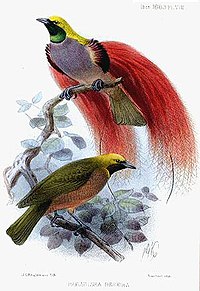
Photo from wikipedia
The central goal of maize ( Zea mays L.) breeding is to increase the frequencies of favorable alleles in germplasm. Two broad-based composites Cpop.15 and Cpop.16 were subjected to five… Click to show full abstract
The central goal of maize ( Zea mays L.) breeding is to increase the frequencies of favorable alleles in germplasm. Two broad-based composites Cpop.15 and Cpop.16 were subjected to five cycles of modified mass selection (MMS) to increase grain yield, lodging resistance, early maturing and short plant height. We evaluated the direct responses of Cpop.15 and Cpop.16 by analyzing per se performance of the two original populations and that of each resulting population after five cycles of MMS (a total of 12 entries) for days to silking (DS), plant height (PH), ear height (EH), stalk lodging (SL), and grain yield (GY) in four environments. Also, we evaluated trends in general and specific combining ability (GCA and SCA) for these traits in the testcrosses of the above 12 entries with three tester lines (for a total of 36 entries) that represent Chinese heterotic groups. Cpop.15 and Cpop.16 responded significantly to selection for DS, PH, and EH, while SL and GY showed no significant changes. GCA estimates in both populations were improved significantly for DS, PH, EH and GY, but not for DS and GY in Cpop.15, suggesting an increase in the frequency of favorable additive alleles with each cycle of selection for these traits. Promising hybrids could be easily generated by crossing inbred lines developed from later cycles of selection in Cpop.15 and Cpop.16 to Sipingtou germplasm. Our results indicate that MMS effectively improved the performance of both populations per se and testcrosses, taking the best advantage of both GCA and SCA.
Journal Title: Euphytica
Year Published: 2020
Link to full text (if available)
Share on Social Media: Sign Up to like & get
recommendations!